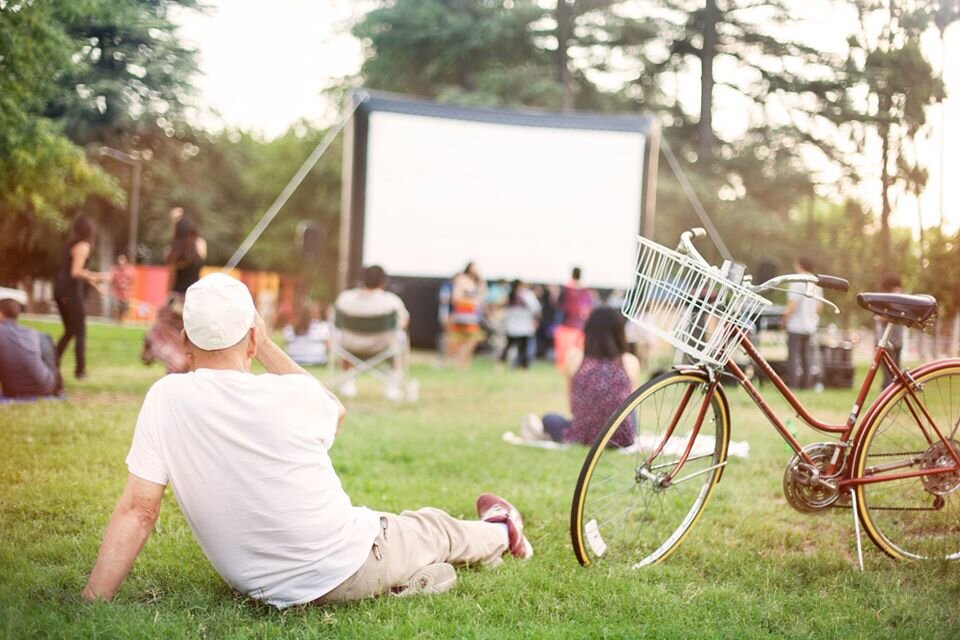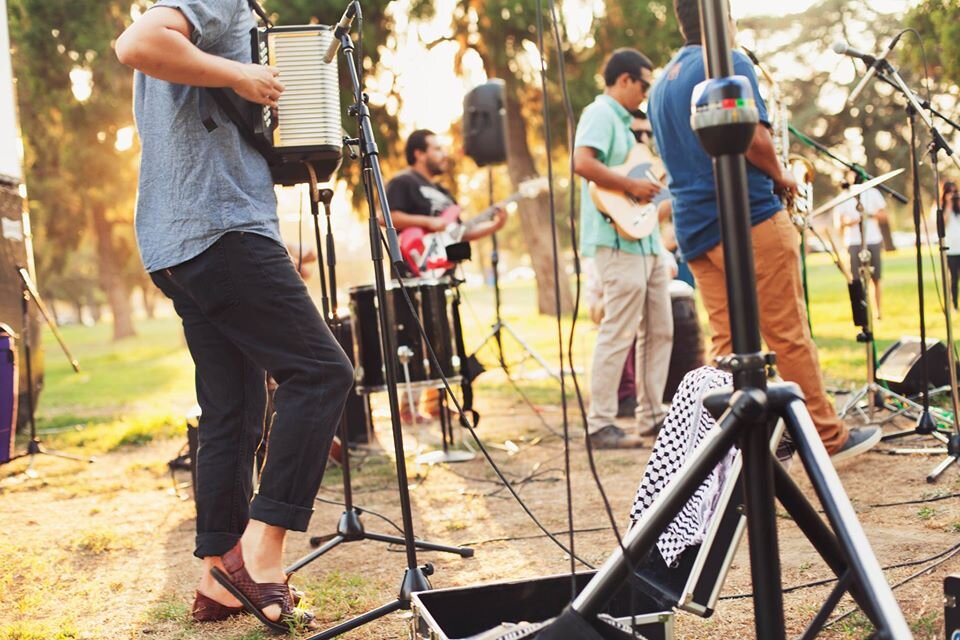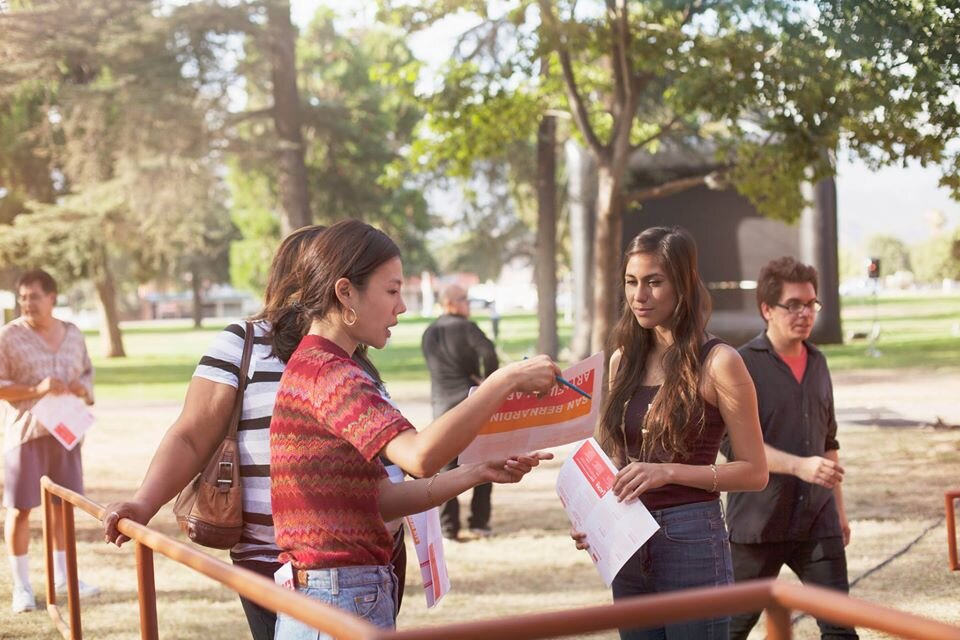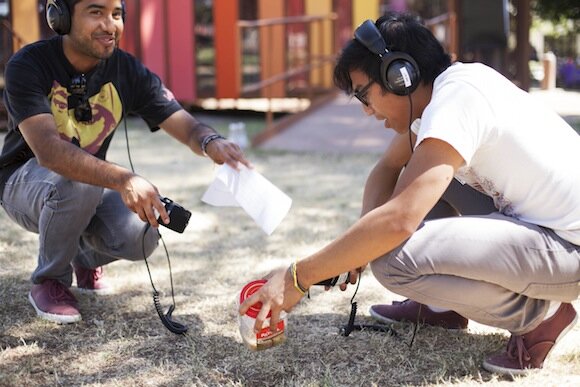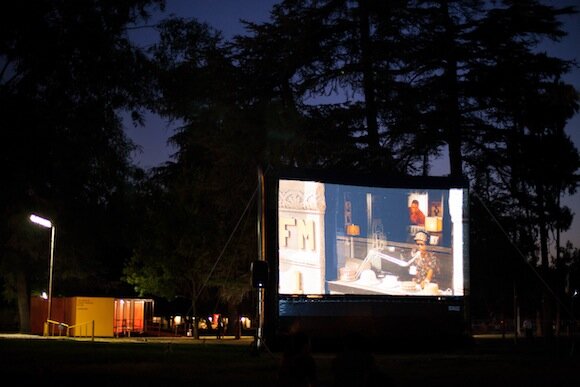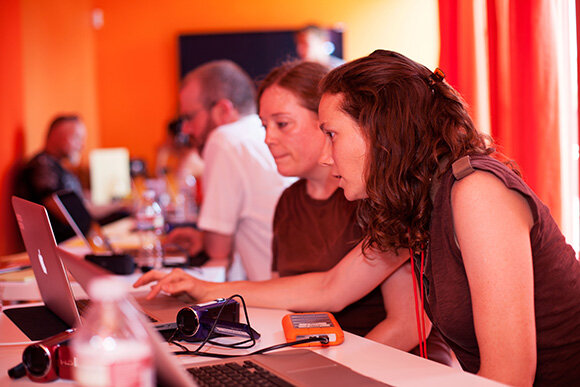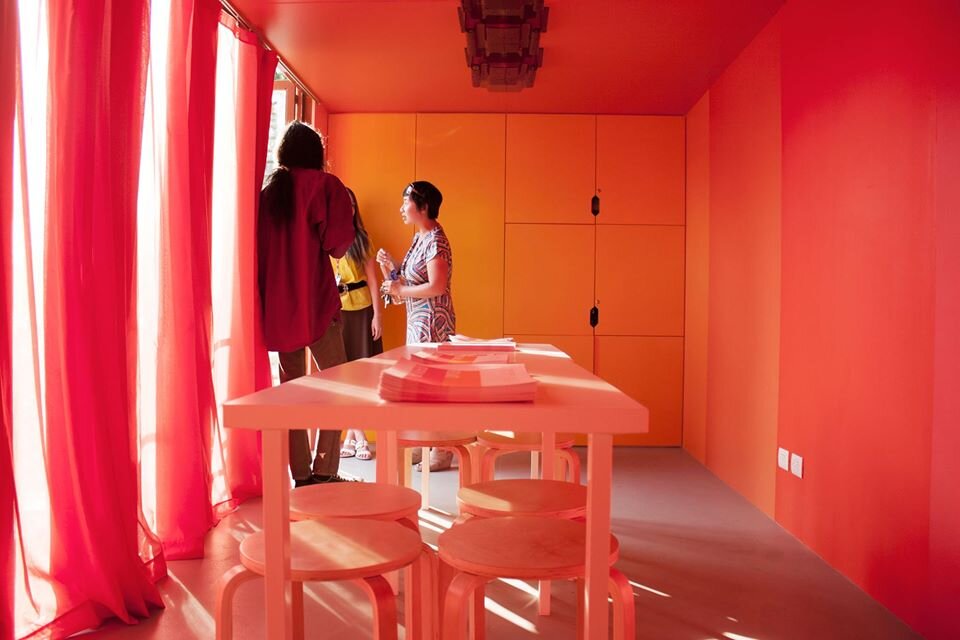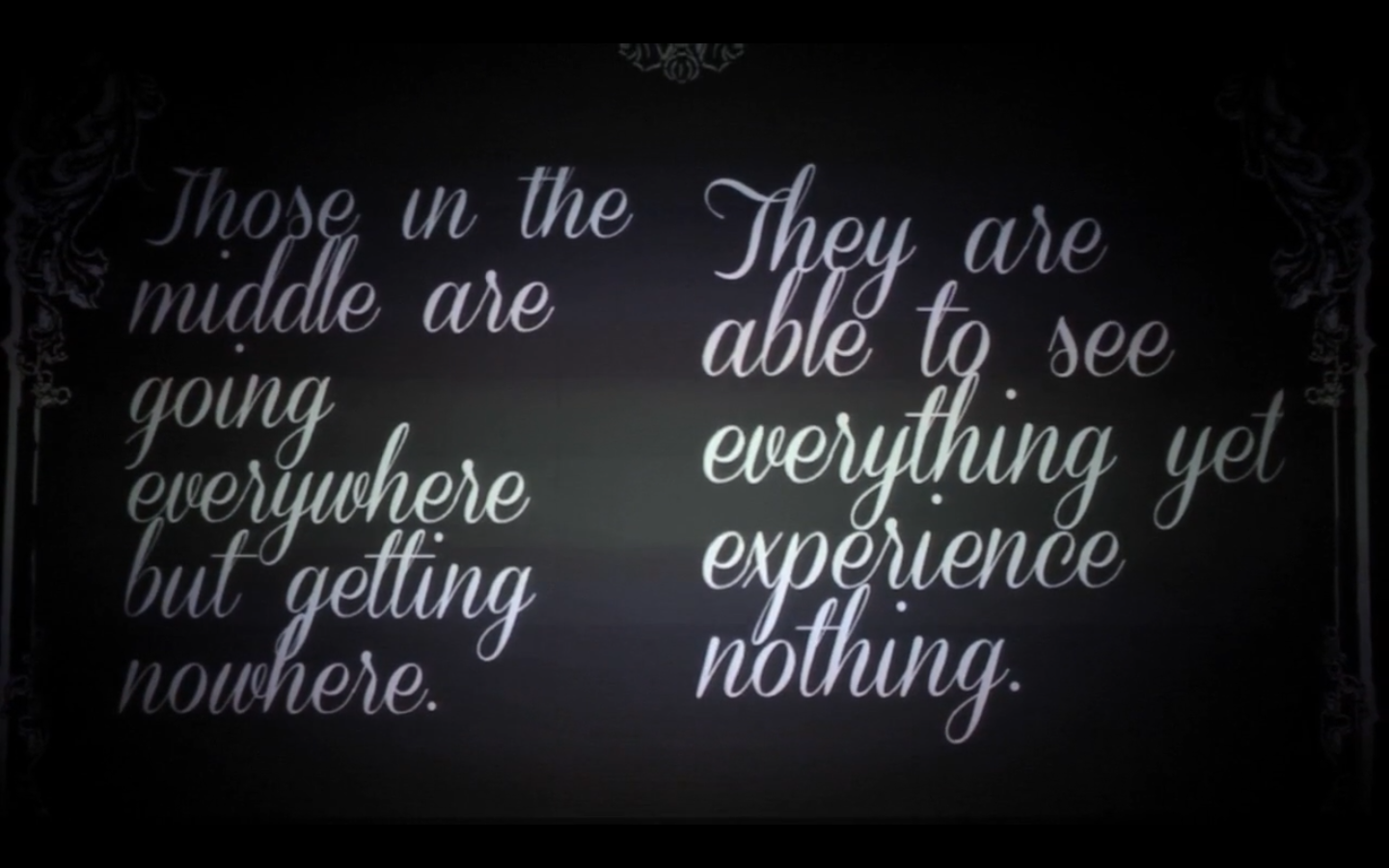Making a Brand:
LACMA’s
Art+Film Lab
The LACMA9 Art+Film Lab was a $0.6m media literacy and creative placemaking initiative funded by The Irvine Foundation. The Lab wasn’t much more than a handshake and commitment to funding when I was hired onboard as producer and community engagement manager. Presented is a case study on how LACMA and I worked together to bring the Lab’s content and brand assets to life. The case study also serves as documentation for the Lab’s live events and community offerings.
Photo by Hanul Bahm
What’s in a name?
The Lab had never existed, so we needed to create a name that would stick in people’s minds. It was named by committee, with LACMA’s Press, Marketing, Design, Editorial, and Education teams all weighing in. We thought about its risk capital-funded, hands-on nature and felt “Lab” captured those qualities. “Art+Film” was a nod to LACMA’s ongoing affiliation with Tinseltown and the Lab’s mediums. “LACMA9” was hardest to come up with. The “9” referenced the nine cities we traveled the Lab to.
Each version of the Lab was named after its host city, an extension of LACMA Education’s ethos of radical friendliness. We wanted to foreground communities and provide ownership. The nine Lab communities were: Redlands, San Bernardino, Altadena, East Los Angeles, Hacienda Heights, Montebello, Compton, Inglewood, and Torrance.
Visual branding
Once we had a name, we sought to integrate the Lab’s brand identity with the structure that would house it. Jorge Pardo’s team was still building the structure in the Yucatan; we would not see the structure until weeks before launch. Working off temp color renderings, LACMA Art Director David Karwan and I came up with a look and feel that integrated Jorge’s design with museum branding. Above are two versions of printed program notes. When time came to conserve costs, we went from two-color to one-color printing.
Though we created social media posts and e-blasts, we knew online outreach wasn’t enough. So we canvassed community spaces with bilingual flyers. We also printed a full color “Intro to LACMA” brochure. We made it a point to feature works by Henry Ossawa Tanner, Diego Rivera, and Millard Sheets. It was a marathon of programming and writing copy. The LACMA9 website, now retired, housed most of those assets.
LACMA Connect, a monthly calendar and newsletter for museum members, plugs the LACMA9 Art+Film Lab.
Insider, a magazine for LACMA donors, highlighted the Lab’s programs, architecture, and communities served. I interviewed with LACMA’s Editorial Director Scott Tennent for the article.
LACMA9 Oral History Project
This first-person storytelling project was a kind of Sears portrait studio for the digital age. We invited community members to share stories with us on camera, then gave everyone a DVD copy. Some were edited and published on our Vimeo channel. When we disbanded the physical Lab, we custom designed a step-and-repeat to match the original Yucatan orange backdrop.
Of the many things the Lab was and wasn’t, we wanted the Oral History Project to be our singular contribution to the community.
Mishe Williams II, filmed at the Inglewood Public Library in Inglewood, CA.
Producer / Editor: Hanul Bahm
Camera / Interviewer: Walter Vargas
Artist Stephanie Mercado, filmed on the East Los Angeles College campus in Monterey Park, CA. In collaboration with Self Help Graphics.
Producer / Editor: Hanul Bahm
Camera / Interviewer: Rafael Cardenas
Photography: its weight in gold
The LACMA9 Art+Film Lab was an unprecedented space for community learning and filmmaking. To generate awareness, Duncan Cheng was hired to image and document the Lab’s offerings. His photos appeared everywhere: member publications, KCET blogs, videos, and on the LACMA9 website.
Photography by Duncan Cheng
Producer / Camera / Editor: Hanul Bahm
LACMA Art+Film Video
As an extension of its Art+Film initiative, LACMA hired me to produce a video promoting their professional development program for LAUSD teachers. This video highlights their participation, as well as the exhibition that served as inspiration: Haunted Screens: German Expressionist Cinema of the 1920s.
The three-day intensive, culminating in finished films, didn’t leave participants with much down time. Footage and interviews were secured on the fly. I’m grateful to everyone who shared their experiences with me.
Participants narrating the action created organic messaging and credibility. Some of the best marketing will always be community stories and testimonials.











